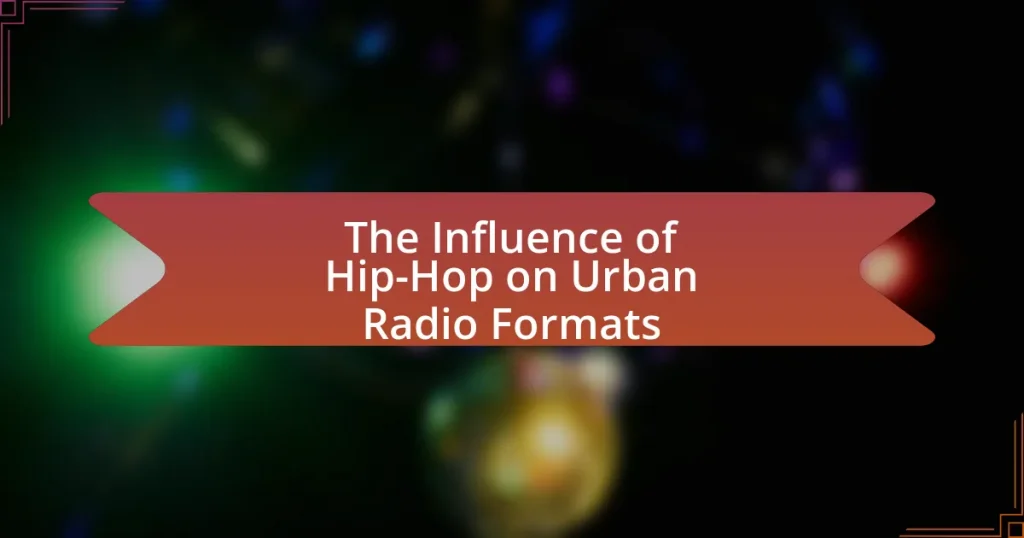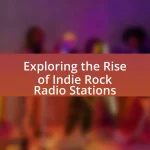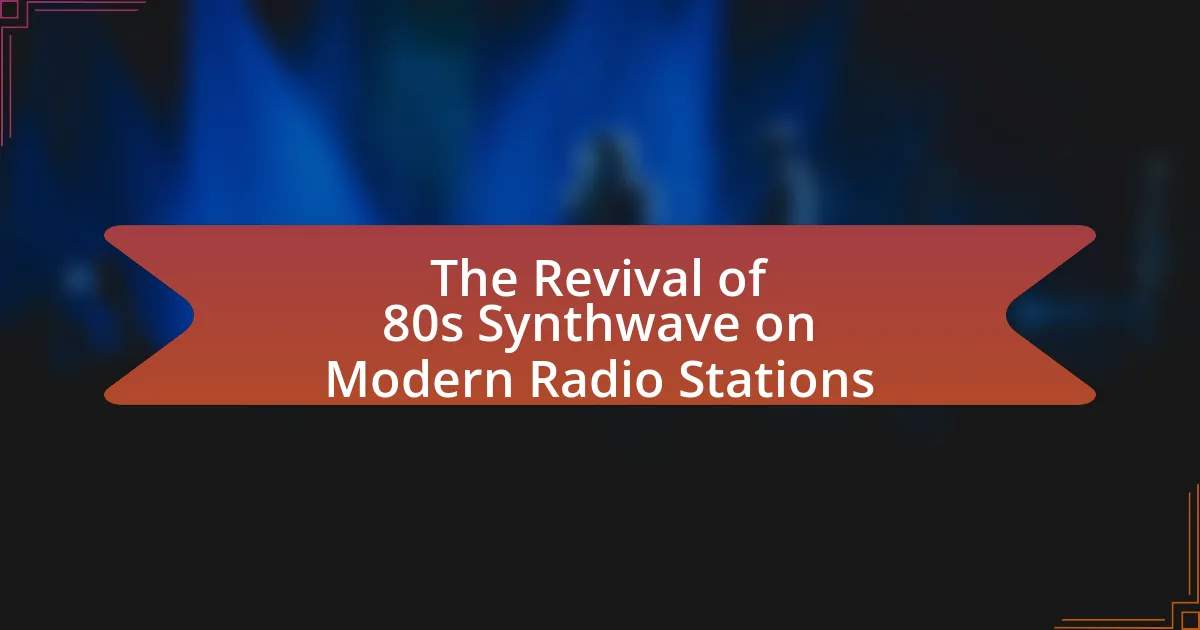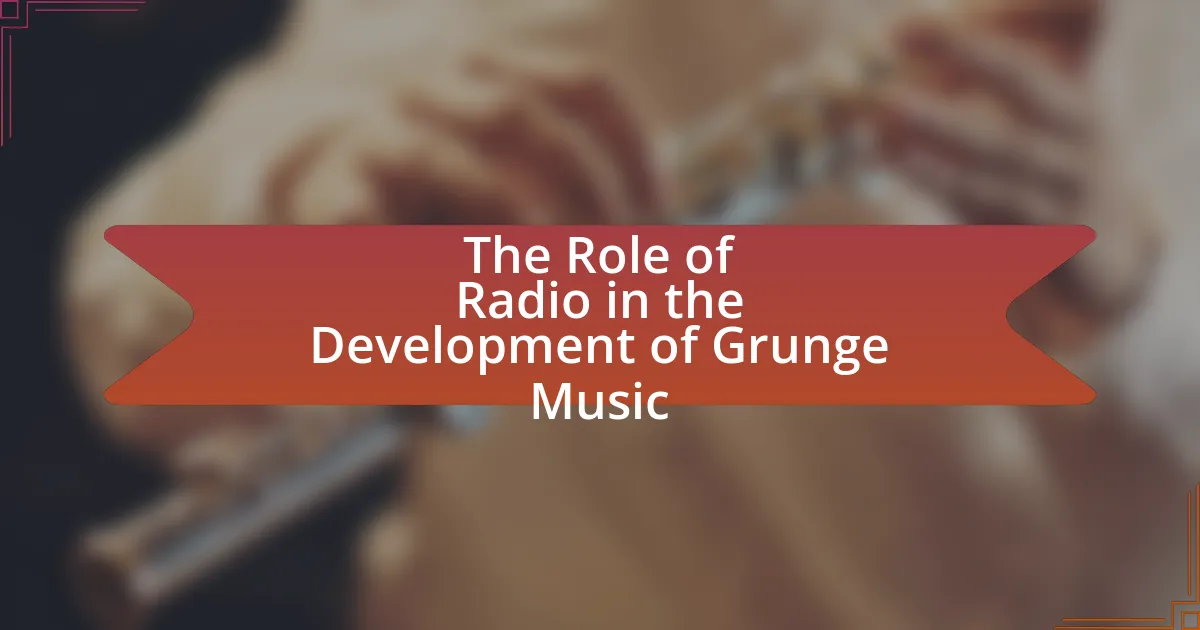The article examines the significant influence of Hip-Hop on Urban Radio formats, highlighting how this genre has reshaped programming choices, audience engagement, and advertising strategies. It details the historical evolution of Urban Radio from its R&B roots to the current dominance of Hip-Hop, supported by statistical data indicating its popularity among listeners. The article also explores the commercialization of Hip-Hop, the role of DJs and hosts, and the demographic shifts resulting from Hip-Hop’s rise, while addressing the challenges and future trends for Urban Radio in adapting to this dynamic genre.

What is the Influence of Hip-Hop on Urban Radio Formats?
Hip-Hop significantly influences urban radio formats by shaping programming choices, audience engagement, and advertising strategies. Urban radio stations increasingly prioritize Hip-Hop music due to its popularity, with Nielsen reporting that Hip-Hop/R&B is the most consumed genre in the U.S. as of 2021. This genre’s dominance leads to a shift in playlists, where stations incorporate more Hip-Hop tracks to attract younger listeners, who are the primary consumers of this music style. Additionally, Hip-Hop artists often engage with their audiences through social media and live events, creating a community that urban radio stations leverage for listener loyalty and increased ratings. The integration of Hip-Hop culture into urban radio formats also influences advertising, as brands target the demographic that listens to these stations, resulting in tailored marketing campaigns that resonate with the audience.
How has Hip-Hop shaped the evolution of Urban Radio?
Hip-Hop has significantly shaped the evolution of Urban Radio by transforming its content, audience engagement, and programming strategies. Initially, Urban Radio primarily focused on R&B and soul music, but the rise of Hip-Hop in the late 1970s and 1980s led to a shift in playlists that increasingly incorporated rap music, reflecting the genre’s growing popularity. By the 1990s, stations like Hot 97 in New York and Power 106 in Los Angeles became pivotal in promoting Hip-Hop artists, which in turn attracted a younger, diverse audience eager for this new sound.
Furthermore, Hip-Hop’s influence extended beyond music to include cultural elements such as fashion, language, and social issues, prompting Urban Radio to adopt a more holistic approach to programming. This included talk segments addressing community concerns and artist interviews that provided deeper insights into the Hip-Hop culture. The integration of Hip-Hop into Urban Radio has also been supported by significant statistics; for instance, a 2020 Nielsen report indicated that Hip-Hop/R&B was the most consumed music genre in the U.S., highlighting its dominance and the necessity for Urban Radio to adapt accordingly.
Overall, Hip-Hop’s impact on Urban Radio is evident in its programming evolution, audience demographics, and cultural relevance, solidifying the genre’s role as a cornerstone of Urban Radio’s identity.
What historical events contributed to the rise of Hip-Hop in Urban Radio?
The rise of Hip-Hop in Urban Radio was significantly influenced by the emergence of block parties in the 1970s, where DJs like Kool Herc popularized breakbeat music. These events fostered a community around Hip-Hop culture, leading to the genre’s increased visibility. The 1980s saw the release of influential tracks such as “Rapper’s Delight” by the Sugarhill Gang, which brought Hip-Hop into mainstream consciousness and radio play. Additionally, the establishment of dedicated Hip-Hop radio stations, like New York’s WBLS and Los Angeles’ KDAY, further solidified the genre’s presence in urban radio formats. The 1990s marked a pivotal moment with the rise of artists like Tupac Shakur and The Notorious B.I.G., whose music resonated with urban audiences and was heavily featured on radio, cementing Hip-Hop’s role in urban culture.
How did the commercialization of Hip-Hop impact Urban Radio formats?
The commercialization of Hip-Hop significantly transformed Urban Radio formats by prioritizing mainstream appeal and profitability. As Hip-Hop gained commercial success in the late 1990s and early 2000s, Urban Radio stations began to shift their playlists to include more commercially viable Hip-Hop tracks, often favoring popular artists over local talent. This shift was evidenced by the rise of stations like Hot 97 in New York and Power 106 in Los Angeles, which adopted a format heavily focused on Hip-Hop hits to attract larger audiences and advertising revenue. Consequently, Urban Radio became a platform that not only showcased Hip-Hop culture but also influenced its direction, leading to a homogenization of sound that catered to commercial interests rather than diverse artistic expressions.
What are the key characteristics of Urban Radio influenced by Hip-Hop?
Urban Radio influenced by Hip-Hop is characterized by its focus on contemporary urban music, community engagement, and cultural representation. This format prominently features Hip-Hop tracks, often prioritizing local artists and emerging talent, which fosters a sense of community and connection among listeners. Additionally, Urban Radio incorporates spoken word segments, interviews, and discussions that address social issues relevant to the urban demographic, enhancing its role as a platform for cultural expression and activism. The integration of interactive elements, such as listener call-ins and social media engagement, further solidifies its connection to the audience, making it a dynamic and responsive medium.
How does Hip-Hop culture manifest in Urban Radio programming?
Hip-Hop culture manifests in Urban Radio programming through the incorporation of rap music, discussions on social issues, and the promotion of local artists. Urban radio stations often prioritize hip-hop tracks, reflecting the genre’s dominance in popular music, with data showing that hip-hop accounted for over 30% of total music consumption in the U.S. in 2020. Additionally, these stations frequently feature talk segments that address topics relevant to the hip-hop community, such as racial inequality and cultural identity, thereby fostering a dialogue that resonates with their audience. Furthermore, urban radio serves as a platform for emerging hip-hop artists, providing them with exposure and opportunities to reach wider audiences, which is crucial for the genre’s growth and evolution.
What role do DJs and hosts play in shaping Hip-Hop content on Urban Radio?
DJs and hosts play a crucial role in shaping Hip-Hop content on Urban Radio by curating playlists, facilitating discussions, and promoting emerging artists. They influence listener preferences through their selections and commentary, often reflecting the cultural and social issues relevant to the Hip-Hop community. For instance, DJs like Funk Flex and hosts such as Angie Martinez have historically introduced new tracks and artists, significantly impacting their popularity and acceptance in the mainstream. Their ability to connect with audiences and provide context to the music fosters a deeper understanding of Hip-Hop culture, making them pivotal in the genre’s evolution on Urban Radio.
Why is Hip-Hop significant in the context of Urban Radio formats?
Hip-Hop is significant in the context of Urban Radio formats because it has become a dominant genre that shapes programming, audience engagement, and advertising strategies. The genre’s rise in popularity has led to Urban Radio stations increasingly prioritizing Hip-Hop tracks, which now account for over 30% of radio airplay in the United States, according to Nielsen’s 2021 data. This shift reflects Hip-Hop’s cultural relevance and its ability to resonate with diverse demographics, making it a key driver of listener loyalty and market growth in Urban Radio.
What demographic shifts have occurred due to Hip-Hop’s influence on Urban Radio?
Hip-Hop’s influence on Urban Radio has led to significant demographic shifts, particularly in audience composition and engagement. The genre has attracted a younger, more diverse listener base, with a notable increase in the percentage of listeners aged 18-34, which rose from 25% in the early 2000s to over 40% by 2020. Additionally, Urban Radio has seen a rise in multicultural audiences, with Hispanic and Asian listeners increasing their share, reflecting Hip-Hop’s global appeal and crossover into various cultural contexts. This shift is evidenced by Nielsen’s reports indicating that Hip-Hop and R&B now dominate streaming platforms, further solidifying their impact on Urban Radio demographics.
How does Hip-Hop contribute to the identity of Urban Radio stations?
Hip-Hop significantly contributes to the identity of Urban Radio stations by serving as a primary genre that defines their programming and audience engagement. Urban Radio stations often prioritize Hip-Hop music, which reflects the cultural and social dynamics of urban communities, thereby establishing a strong connection with their listeners. According to a Nielsen report, Hip-Hop/Rap was the most consumed genre in the U.S. in 2020, accounting for 28.2% of total music consumption, highlighting its dominance and relevance in shaping the identity of these stations. This genre not only influences the music played but also informs the station’s branding, promotional strategies, and community outreach efforts, reinforcing its role as a voice for urban culture and issues.
How does the influence of Hip-Hop transition to contemporary Urban Radio formats?
The influence of Hip-Hop transitions to contemporary Urban Radio formats through the integration of Hip-Hop elements in programming, playlist curation, and audience engagement strategies. Urban Radio stations increasingly feature Hip-Hop tracks alongside R&B and pop, reflecting the genre’s dominance in popular music; for instance, in 2020, Hip-Hop accounted for over 30% of total music consumption in the U.S., according to the Recording Industry Association of America. Additionally, Urban Radio adapts its content to include Hip-Hop culture, such as artist interviews and discussions on social issues, which resonate with the audience’s interests and enhance listener loyalty. This evolution demonstrates how Hip-Hop not only shapes the sound of Urban Radio but also influences its overall identity and community connection.
What challenges do Urban Radio formats face in adapting to Hip-Hop trends?
Urban Radio formats face significant challenges in adapting to Hip-Hop trends, primarily due to the rapid evolution of the genre and shifting audience preferences. The dynamic nature of Hip-Hop, characterized by frequent changes in style, sub-genres, and emerging artists, complicates programming decisions for Urban Radio. Additionally, competition from digital platforms and streaming services, which offer personalized and on-demand content, further pressures traditional radio to keep pace with listener expectations. According to a 2022 Nielsen report, 60% of Hip-Hop listeners prefer platforms that provide immediate access to new music, highlighting the urgency for Urban Radio to innovate and diversify its offerings to retain relevance in a competitive landscape.
What are the future trends of Hip-Hop’s influence on Urban Radio formats?
Hip-Hop will increasingly dominate Urban Radio formats, shaping programming and audience engagement. As streaming services and social media amplify Hip-Hop’s reach, Urban Radio stations are likely to integrate more Hip-Hop content, including emerging artists and sub-genres, to attract younger demographics. Data from Nielsen’s 2022 report indicates that Hip-Hop/Rap is the most consumed genre among 18-34-year-olds, highlighting its growing influence. Additionally, collaborations between Hip-Hop artists and mainstream pop acts will further blur genre lines, leading Urban Radio to adopt a more diverse playlist strategy that reflects these trends.
How might technology change the way Hip-Hop is presented on Urban Radio?
Technology will significantly change the way Hip-Hop is presented on Urban Radio by enabling more interactive and personalized listening experiences. With advancements in streaming services and mobile applications, listeners can now curate their playlists, access on-demand content, and engage with artists through social media platforms. For instance, platforms like Spotify and Apple Music allow users to discover new Hip-Hop tracks tailored to their preferences, which can influence Urban Radio programming decisions. Additionally, data analytics can provide insights into listener demographics and preferences, allowing radio stations to adapt their content to better meet audience demands. This shift towards technology-driven engagement is supported by the fact that over 60% of music listeners now prefer streaming services over traditional radio, indicating a significant change in how Hip-Hop is consumed and presented.
What emerging artists are shaping the future of Hip-Hop on Urban Radio?
Emerging artists shaping the future of Hip-Hop on Urban Radio include Ice Spice, who gained significant traction with her viral hits and collaborations, and Central Cee, known for his innovative sound that resonates with younger audiences. Additionally, artists like Coi Leray and Latto are making waves with their unique styles and strong social media presence, contributing to the evolving landscape of Hip-Hop. Their influence is evident in the increasing airplay of their tracks on Urban Radio, reflecting a shift towards more diverse and contemporary sounds in the genre.
What best practices can Urban Radio stations adopt to effectively integrate Hip-Hop?
Urban Radio stations can effectively integrate Hip-Hop by curating diverse playlists that reflect the genre’s evolution and by engaging with local Hip-Hop artists. This approach not only showcases a wide range of Hip-Hop styles but also fosters community connections, which are essential for audience loyalty. Research indicates that stations that feature local talent see increased listener engagement, as local artists often have dedicated followings. Additionally, incorporating Hip-Hop culture into station branding and promotional events can enhance relatability and attract a younger demographic, which is crucial for maintaining relevance in a competitive media landscape.






